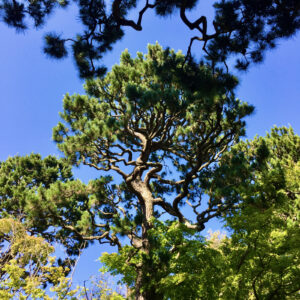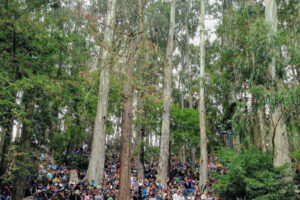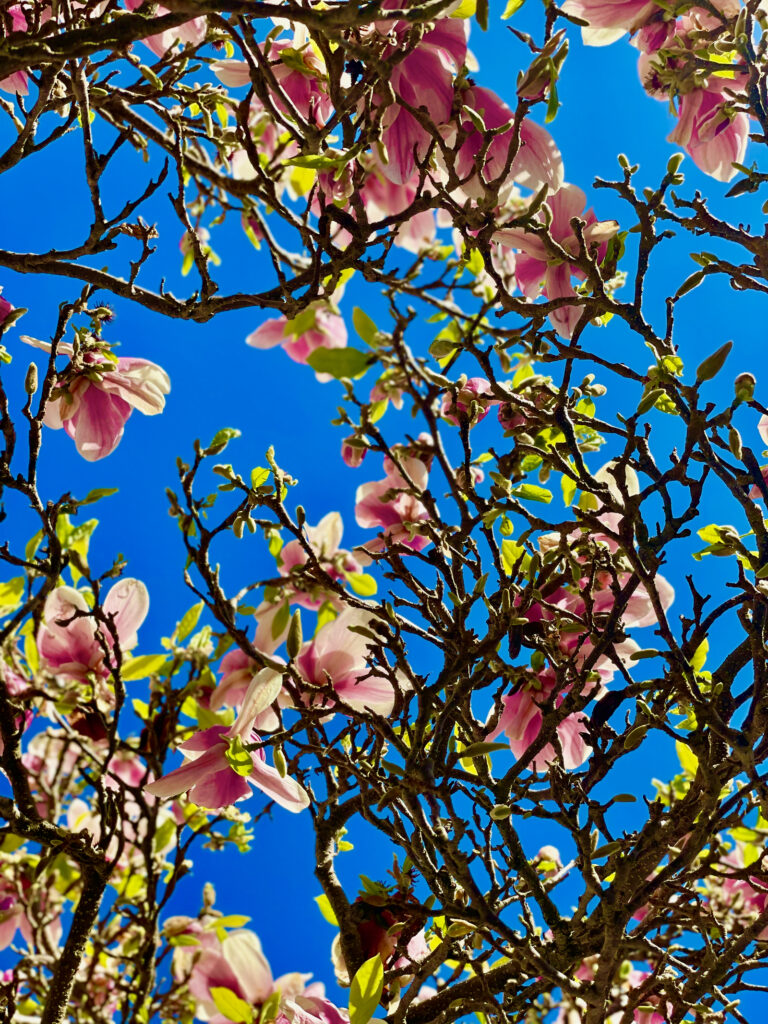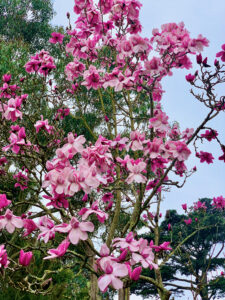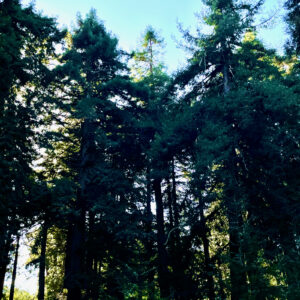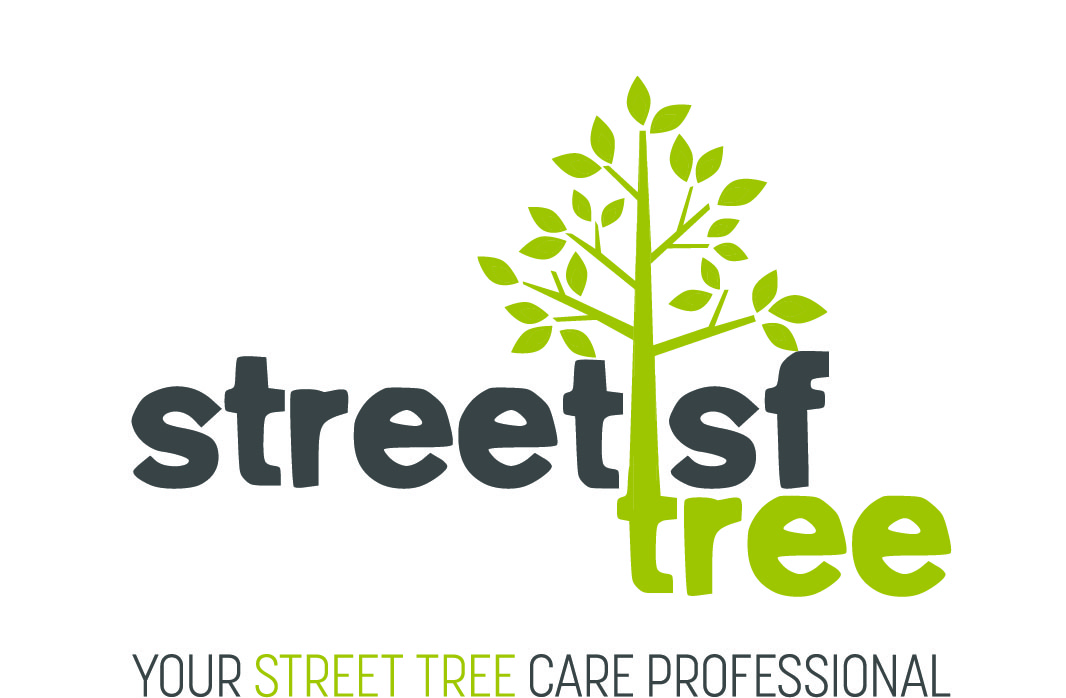The Paperwork Around Trees in San Francisco
San Francisco loves its trees. And while we don’t have traditional “fall foliage” like the East Coast or Midwest, we do have an incredibly beautiful variety of tree species that you are unlikely to find in very many other American cities. Our diverse canopy of trees is crucial to The City’s ecosystem; they help manage stormwater, reduce air pollution, sequester carbon, save energy, increase property values, provide wildlife habitat, calm traffic, provide a more pleasant pedestrian experience and benefit human health.
In this post we want to share with you a brief history of SF neighborhood trees, some of The City’s most popular tree types, and important information about planting a street tree and how to transfer maintenance responsibility of that tree to San Francisco after three years. If you are a homeowner with street/sidewalk trees on your property, or the purchaser of a home in San Francisco with newly planted street or sidewalk trees, you’ll want to know this important information.
A Brief History of Trees in San Francisco
While trees have long been a part of our beautiful landscape, our story about neighborhood trees in San Francisco begins in the early 19th century when European settlers first arrived in the area and started planting trees they brought. Initially, the land was covered in a variety of native trees, including California live oaks, bay laurels, and redwoods. As the city developed, these native trees were slowly replaced by species brought by newcomers.
In the mid-1800s with the population boom from the gold rush, street tree planting became more organized. Early tree planting in San Francisco focused on species like Monterey cypress, eucalyptus, and palm trees. Many of these species still line the streets of the city today. The palm trees, in particular, add a distinctive element to San Francisco’s landscape, evoking a sense of tropical paradise in the midst of a bustling urban environment.
The 1906 San Francisco Earthquake and the Great Park Movement
The devastating 1906 earthquake and subsequent fires that ravaged the city brought about a significant shift in the way San Francisco residents thought about urban planning and trees. The disaster destroyed much of the city’s urban forest, leading to calls for a more organized approach to planting and maintaining neighborhood trees.
This catastrophe prompted the birth of the “Great Park Movement,” a grassroots initiative to create green spaces, parks, and tree-lined streets throughout San Francisco. Golden Gate Park, established in the late 19th century, was a shining example of this movement, providing residents with a vast green oasis in the heart of the city. This park, along with others like Buena Vista Park, played a crucial role in the restoration of greenery within San Francisco neighborhoods.
Conservation Efforts and Arbor Day Celebrations
Throughout the 20th century, San Francisco continued to prioritize the conservation of trees. The city began to celebrate Arbor Day, a tradition that encouraged tree planting and education about the importance of trees in our urban environment. San Francisco’s Arbor Day festivities often included tree-planting events and educational programs in schools.
The Arbor Day celebrations, along with the efforts of community organizations, contributed to the preservation and expansion of neighborhood trees. Today, San Francisco boasts a remarkable urban forest that enhances the quality of life for residents, providing shade, improving air quality, and supporting local wildlife.
Urban Development and Environmental Awareness
As the city continued to evolve and grow, the balance between urban development and environmental preservation became a pressing concern. The importance of maintaining neighborhood trees and green spaces for the well-being of residents and the environment gained recognition.
Community groups and government agencies started collaborating to develop urban forestry programs aimed at ensuring the health and vitality of trees in San Francisco. These initiatives include regular tree maintenance, planting of new trees, tree protection ordinances and even San Francisco street tree rules for ADUs. (See our blog, “Everything You Wanted To Know About ADUs” here.) Moreover, the city took steps to incorporate climate change resilience into its tree planting programs, recognizing that trees play a critical role in reducing carbon emissions and mitigating the impacts of climate change.
Notable Tree Species in San Francisco
San Francisco’s diverse climate allows for a wide range of tree species to thrive. Some of the most notable and iconic trees in the city include:
- Monterey Cypress: These stately trees are often seen along the city’s coastline, adding a sense of majesty to the Pacific Ocean vistas. “Mike” the Monterey Cypress is the largest of any of the trees in Buena Vista Park. You can see Mike driving down Haight Street.
- Eucalyptus: Eucalyptus trees, with their aromatic leaves and striking bark, are a common sight in San Francisco’s parks and neighborhoods. The best place in the city to identify various kinds of eucalyptus is in Saint Francis Wood, the superbly landscaped residential district designed in 1912 by the late Frederick Law Olmsted, Jr. In addition, Mt. Sutro is covered in a forest of Eucalyptus trees.
- Magnolia Trees: Known for their large, fragrant blossoms, magnolia trees can be found gracing many streets and gardens throughout the city. Peak Magnolia season in San Francisco is from January through March. The San Francisco Botanical Gardens has over 200 magnolia trees, and you can visit at the entrance near the Inner Sunset.
- Cherry Blossoms: The city’s cherry blossom trees burst into beautiful, delicate pink and white blossoms each spring, creating a breathtaking spectacle in neighborhoods like Japantown.
- Redwoods: Although not as numerous in the city as they once were, redwoods can still be found in places like the Presidio, Muir Woods, and the National AIDS Memorial Grove in Golden Gate Park by the Inner Richmond, all offering a connection to the region’s ancient natural history.
All New SF Street or Sidewalk Trees Need SFDPW Issued Permits
Got a street tree or street trees? Do they have current permits from the SFDPW?
Long ago and far away, to balance the city budget, a past Mayor who went on to be Governor transferred responsibility for tree maintenance from the city to property owners. While this saved money, no one liked it, tree maintenance was inconsistent, and in 2016 voters transferred ownership back to the city, where it remains as of this writing in 2023, the responsibility of the Department of Public Works. DPW has named their street tree maintenance program StreetTreeSF and come up with a snazzy logo.
Street or Sidewalk Trees in Existence in 2016
In 2016, the City’s 125,000-plus existing street trees transferred ownership and maintenance responsibility from property owners back to the city, currently the city’s Department of Public Works.
Street or Sidewalk Trees Planted After 2017
New sidewalk (street) trees planted by property owners after the 2016 transfer:
- A permit is required to plant a new street or sidewalk tree. There is no cost for the permit, but the city just wants to know the tree exists.
- The property owner must agree to care for and water the tree for three years.
- After three years, the city is supposed to assume ownership of the tree, but…
The transfer of maintenance responsibility of trees planted after 2016 is not automatic
After three years of watering and maintenance, the city is supposed to assume responsibility for the tree and it’s maintenance. However, the transfer of tree responsibility at the three-year mark does not appear to be automatic. A property owner or their authorized agent must start the process with outreach to the Dept. of Public Works to conduct an inspection of the new trees and formalize the transfer process.
This language is not mentioned on the Public Works website, permit application, or in the City ordinance but only found on the permit itself. If you have trees that were planted post-2016, reach out to Public Works to confirm if those trees have been transferred into the City inventory, and if not, to request an inspection to complete that process.
To do this, please email [email protected] for a transfer request, and the inspector assigned to the area will review, with the caveat that it could take at least 4-6 weeks. Again, this transfer request is only need for sidewalk or street trees that were planted after 2016 by the property owner.
Conclusion
The history of neighborhood trees in San Francisco is a story of resilience, community engagement, and an enduring commitment to preserving the city’s natural beauty. From the early introduction of exotic species to the Arbor Day celebrations and modern urban forestry programs, San Francisco’s trees have thrived and played a vital role in shaping the city’s character and environmental consciousness.
Today, these neighborhood trees continue to enrich the lives of residents and visitors, providing shade, improving air quality, and offering a connection to nature in the midst of an urban environment. San Francisco’s trees remind us of the significance of green spaces in our cities and the role they play in our well-being and the future of our planet.
Looking to buy or sell a home in one of San Francisco’s lovely tree-filled neighborhoods? Get in touch with Jackson Fuller today, your trusted real estate expert in the city to learn more!
